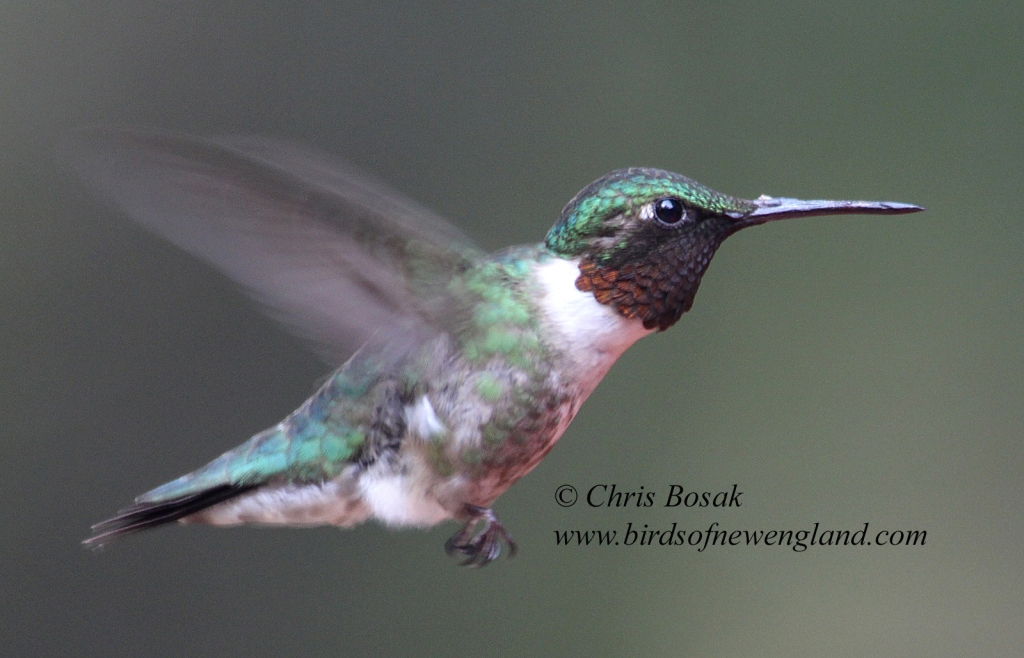
The hummingbird season got off to a slow start for me this year.
I didn’t see a single hummingbird at my feeder in April or May. I saw a few in the backyard in June, but they zipped by my feeding station like it wasn’t even there. That contrasts with last year when a few hummingbirds visited daily from spring through fall.
This year’s fortunes have changed, thankfully, as hummingbirds became a regular occurrence once August hit. I believe the visits are coming from a combination of a hummingbird family that nested nearby and some southward migrants.
Ruby-throated hummingbirds, the only hummingbird species that regularly occurs in the eastern U.S., start their southward migration out of New England in August (some as early as late July.) Just like adult males were the first to arrive in the spring, they are the first to leave on the southward journey.
Plenty of adult male hummingbirds remain in New England. My most frequent visitor over the last few weeks has been a male. They will mostly be gone by the end of the month. Females and first-year birds will mostly be gone by the middle or end of September. Hummingbird feeders can remain up into October as the stragglers heading out of New England will need to fuel up too.
Hummingbirds need plenty of fuel as these tiny birds make their way to Central America for the winter. The arduous nonstop flight across the Gulf of Mexico takes a lot out of the birds. Whether a bird’s route takes it directly across the gulf or a more coastal route, it’s still a long, perilous journey. Their typical weight is just over three grams. They bulk up to about six grams for the journey and are between two and three grams when they get to the other side of the gulf.
Continue reading